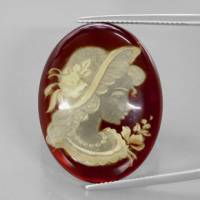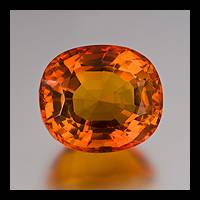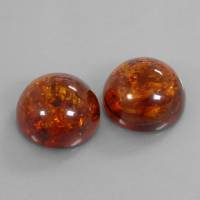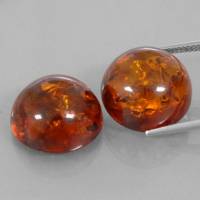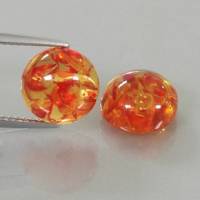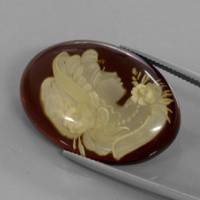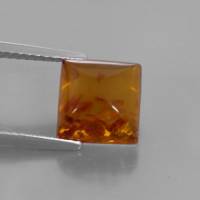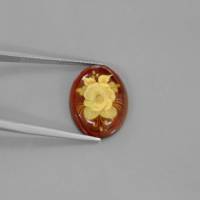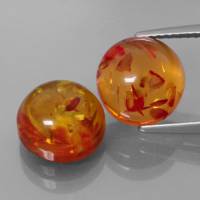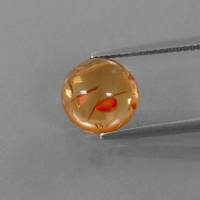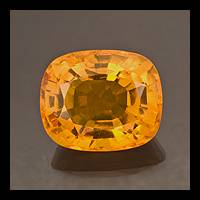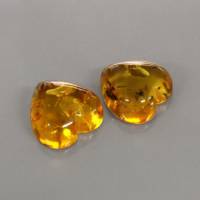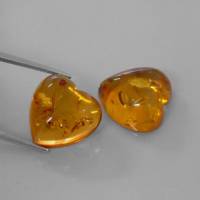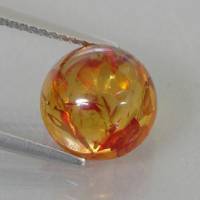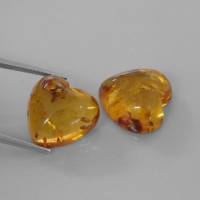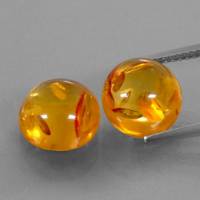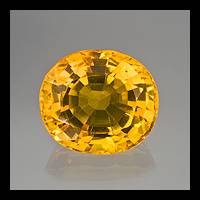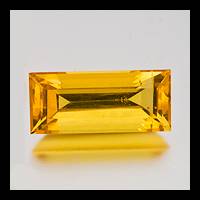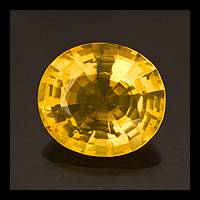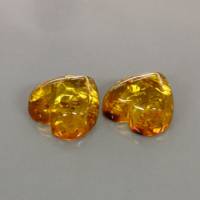Amber
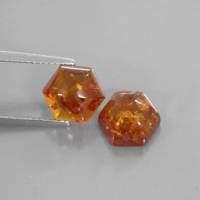
Poland
2.24 carats
© gemselect.com
True amber of lapidary quality comes mainly from the Baltic region (principally Poland and Lithuania), with some production also in Mexico (Chiapas), the Dominican Republic, and Burma. Most so-called "amber" marketed from Colombia and Madagascar is much too young to qualify as true amber.
Amber is mostly drop or nodular shaped with a homogeneous structure, it has yellow and brown colour. Inclusions of insects or parts of plants are common.
Amber is an ancient biological gem material. One of the earliest examples of worked amber are beads from Gough’s cave in southern England, dated 11 000–9000 BC.
Amber Gemstones by Colour
This table shows the variety of hues this gemstone can be found in. Click on a photo for more information.
Amber Gemstones by Size
This table shows distribution of Amber gemstone sizes that are listed on this site. This can give a good indication as to the general availability of this gemstone in different sizes.
Contributed photos
Lightest:0.94 cts
Heaviest:32.57 cts
Average:8.43 cts
Total photos:41
Do you have a larger Amber? Why not upload a photo?
| Amber Treatments | ||||||||||||||||||||||||||||||||||
|---|---|---|---|---|---|---|---|---|---|---|---|---|---|---|---|---|---|---|---|---|---|---|---|---|---|---|---|---|---|---|---|---|---|---|
| Heated in oil to improve clarity, disc-like fractures: "sun spangles". Heated in nitrogen-rich atmosphere to create a darker shallow surface coloration. At darker color, higher RI, lower and darker fluorescence: LW - inert to weak yellowish-orange to dark brownish-orange. Magnification: clouds of tiny gas bubbles below surface. Coloration may fade with prolonged exposure to sunlight. Green color may be created by heat-treatment in autoclave. Reconstructed small amber pieces warmed and compressed together: immersion in alcohol reveals hazy outline and different hue of individual pieces, elongated and flattened gas bubbles. LW: strong patchy chalky blue - Blue Chart Gem Identification, Herve Nicolas Lazzarelli, 2010, p 7 | ||||||||||||||||||||||||||||||||||
| Amber Simulants | ||||||||||||||||||||||||||||||||||
| Newly created resins (copal), other synthetic resins and yellow glass. Ambroid is made from smaller pieces of the genuine amber, which are welded at 140-250 degrees C (284-482 degrees F) and 3000 atmospheres pressure into a substance that is easily mistaken for natural amber. - Gemstones of the world, Walter Schumann, 2001, p 228 | ||||||||||||||||||||||||||||||||||
| Physical Properties of Amber | ||||||||||||||||||||||||||||||||||
| Mohs Hardness | 2 to 2.5, Gemstones of the world (2001) More from other references | |||||||||||||||||||||||||||||||||
| Specific Gravity | 1.05 to 1.10, Blue Chart Gem Identification (2010) More from other references | |||||||||||||||||||||||||||||||||
| Tenacity | Brittle, Gemstones of the world (2001) | |||||||||||||||||||||||||||||||||
| Cleavage Quality | None, Gemstones of the world (2001) | |||||||||||||||||||||||||||||||||
| Fracture | Conchoidal, Gemstones (2009) | |||||||||||||||||||||||||||||||||
| Optical Properties of Amber | ||||||||||||||||||||||||||||||||||
| Refractive Index | 1.539 to 1.545, Blue Chart Gem Identification (2010) More from other references | |||||||||||||||||||||||||||||||||
| Optical Character | Isotropic, Gemmological Tables (2004) | |||||||||||||||||||||||||||||||||
| Birefringence | None, Gemstones of the world (2001) | |||||||||||||||||||||||||||||||||
| Pleochroism | Absent, Gemstones of the world (2001) | |||||||||||||||||||||||||||||||||
| Chatoyancy | Yes, Gemmological Tables (2004) | |||||||||||||||||||||||||||||||||
| Colour | ||||||||||||||||||||||||||||||||||
| Colour (General) | Yellow, white, red, green, blue, brown, black, Gemmological Tables (2004) More from other references | |||||||||||||||||||||||||||||||||
| Causes of Colour | Blue to green, yellow to orange to red to brown, Fluorescence under visible light in Dominican amber; blue is due to light (Rayleigh) scattering in Baltic amber Charge-transfer processes in large organic molecules, Pragmatic Spectroscopy For Gemologists (2011) | |||||||||||||||||||||||||||||||||
| Transparency | Transparent,Translucent,Opaque, Gemmological Tables (2004) More from other references | |||||||||||||||||||||||||||||||||
| Lustre | Resinous, Gemstones (2009) | |||||||||||||||||||||||||||||||||
| Fluorescence & other light emissions | ||||||||||||||||||||||||||||||||||
| Fluorescence (General) | Bluish-white to yellow-green, Gemstones of the world (2001) More from other references | |||||||||||||||||||||||||||||||||
| Fluorescence (Long-Wave UV) | Common moderate to strong (chalky)-blue to yellow-(green), Blue Chart Gem Identification (2010) | |||||||||||||||||||||||||||||||||
| Crystallography of Amber | ||||||||||||||||||||||||||||||||||
| Crystal System | Amorphous, Blue Chart Gem Identification (2010) | |||||||||||||||||||||||||||||||||
| Inclusions in Amber | ||||||||||||||||||||||||||||||||||
| Flow lines, gas bubbles, small organisms, parts of plants trapped - Blue Chart Gem Identification, Herve Nicolas Lazzarelli, 2010, p 7 Insects and pieces of plants, bubbles, discoidal stress spangles with radiating lines - Gemmological Tables, Ulrich Henn and Claudio C. Milisenda, 2004, p 8 | ||||||||||||||||||||||||||||||||||
| Further Information | ||||||||||||||||||||||||||||||||||
| Mineral information: | Amber information at mindat.org | |||||||||||||||||||||||||||||||||
| Significant Gem Localities | ||||||||||||||||||||||||||||||||||
| ||||||||||||||||||||||||||||||||||

